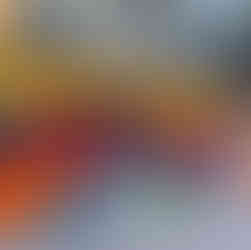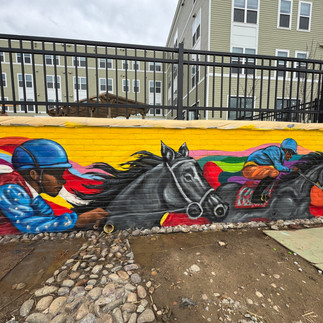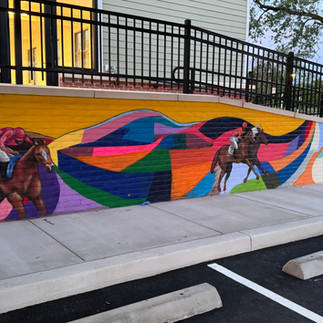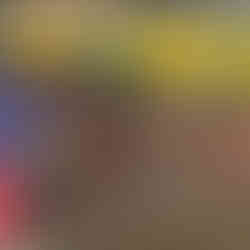Art Meets History in Park Heights: Mural Pays Tribute to Black Jockey George B. 'Spider' Anderson
- Walls Staff

- Jun 26
- 3 min read

For artist LaToya Peoples, the new mural at Cloverbrook Green in Baltimore's Park Heights neighborhood is more than just a vibrant addition to the city’s public art landscape. It is a return to familiar ground and a powerful celebration of community.

Peoples has lived in Park Heights for 15 years, long enough to witness and contribute to the area’s cultural heartbeat. When she was selected to create a mural honoring George B. “Spider” Anderson, one of the first Black jockeys to win major horse races in the United States, she felt both surprised and honored.
“I was really surprised and excited to be selected for this project,” she said. “The mural site is in the neighborhood I live in, and I’ve attended many of the Preakness events over the years since moving to Baltimore. I also painted a mural as part of Preakness in 2022, so I was happy to contribute more of my work to the horse-racing culture we have here in Baltimore.”
One of her earliest murals still stands just a few blocks from the new one. That connection made this project feel especially meaningful. “It’s a full circle moment for me,” she added.
At the time she created the design, Peoples had not yet learned the full story of Spider Anderson. As a result, she approached the mural with a broader vision in mind. “I didn’t actually learn about Spider’s story until after I designed the mural,” she explained. “So I took a more generalized approach with the design depicting the jockeys, while looking at historic and contemporary images.”
Rather than telling a single narrative, the mural evokes the emotion of a race day. “I wanted to portray the excitement and movement of a race day,” she said. “So I abstracted the background into swirling vibrant color to translate that feeling.”
Among the many elements in the mural, one section stands out as her personal favorite.
“There’s a section of the mural with a close-up scene of two jockeys, it’s probably my favorite part of the mural because of the way that I painted it,” she said. “There’s a certain tension and movement through space that I feel captured well.”
Beyond technique or composition, what matters most to Peoples is how the mural resonates with the community. “The most meaningful thing about doing a mural like this is the impact on the community, how the work becomes a celebration and a landmark for people.”
The project came with real-world challenges. The mural was installed on an active construction site with unpredictable weather and frequent logistical changes. Throughout the process, Peoples said she felt fully supported.
“The Walls Project was an amazing support and advocate for me during the process,” she said. “From the contracting and design phase through installation of the final artwork I felt seen, trusted, and cared for as an artist.”
Creating public art often means creating in public view. For Peoples, those everyday interactions became some of the most memorable moments of the project. “I think my favorite moments were the daily reactions from people on site as I made progress throughout the installation,” she said. “Most people haven’t seen a mural being installed before their eyes, developing every day, so it’s always fun seeing people experience that up close.”
The mural holds a deeper significance for Park Heights and Baltimore as a whole.
“Baltimore City and especially the Park Heights communities are very proud places,” she said. “People are proud of their history. They’re proud of their culture, and they’re proud of the progress that they’re making towards the future.”
She noted that many of Baltimore’s current leaders come from the Park Heights area, which adds further weight to a project centered on legacy and pride.
As the mural now stands completed, vivid and full of motion, Peoples offered a final thought. “Thank you to all who made this project possible!!!!!!”













Comments